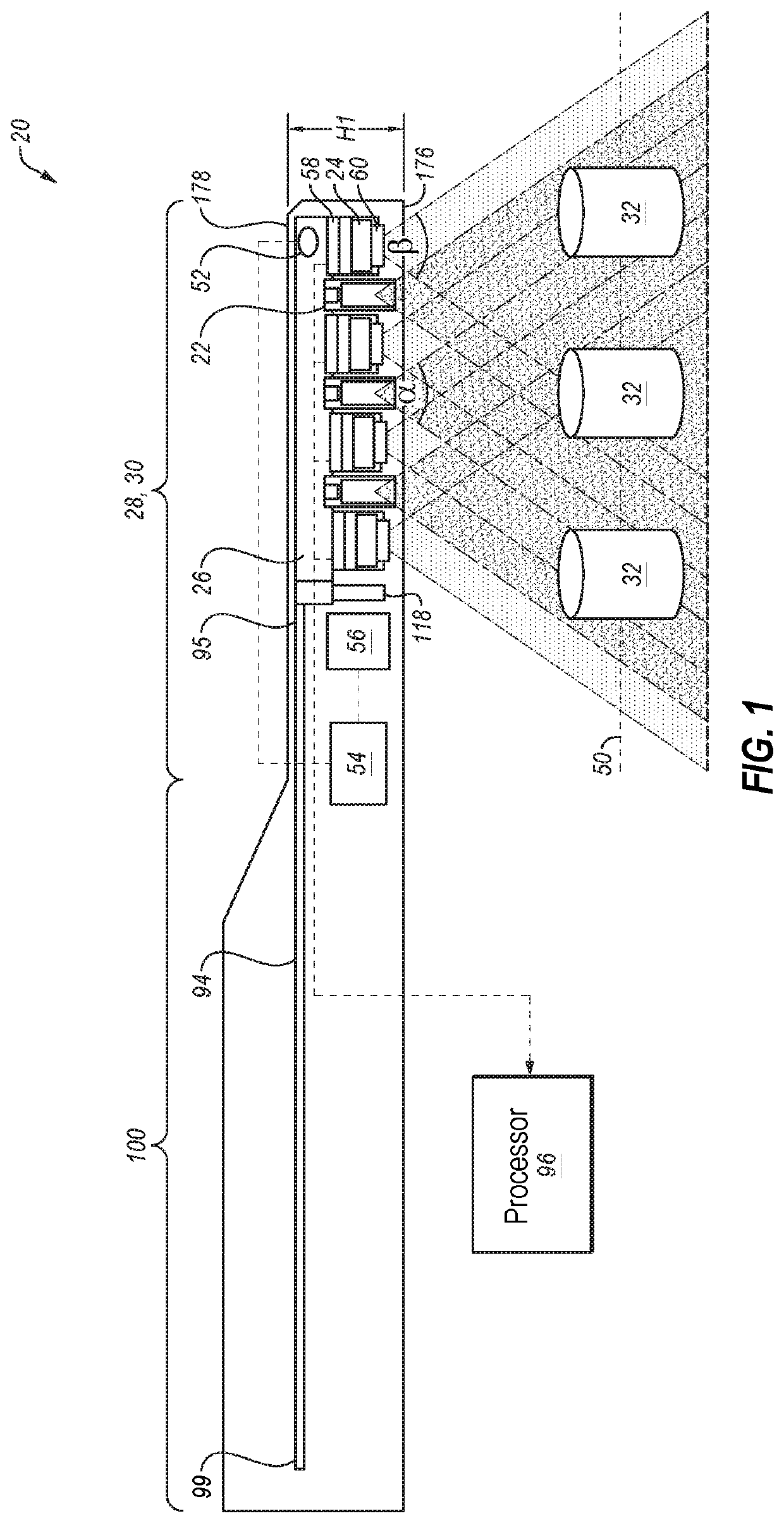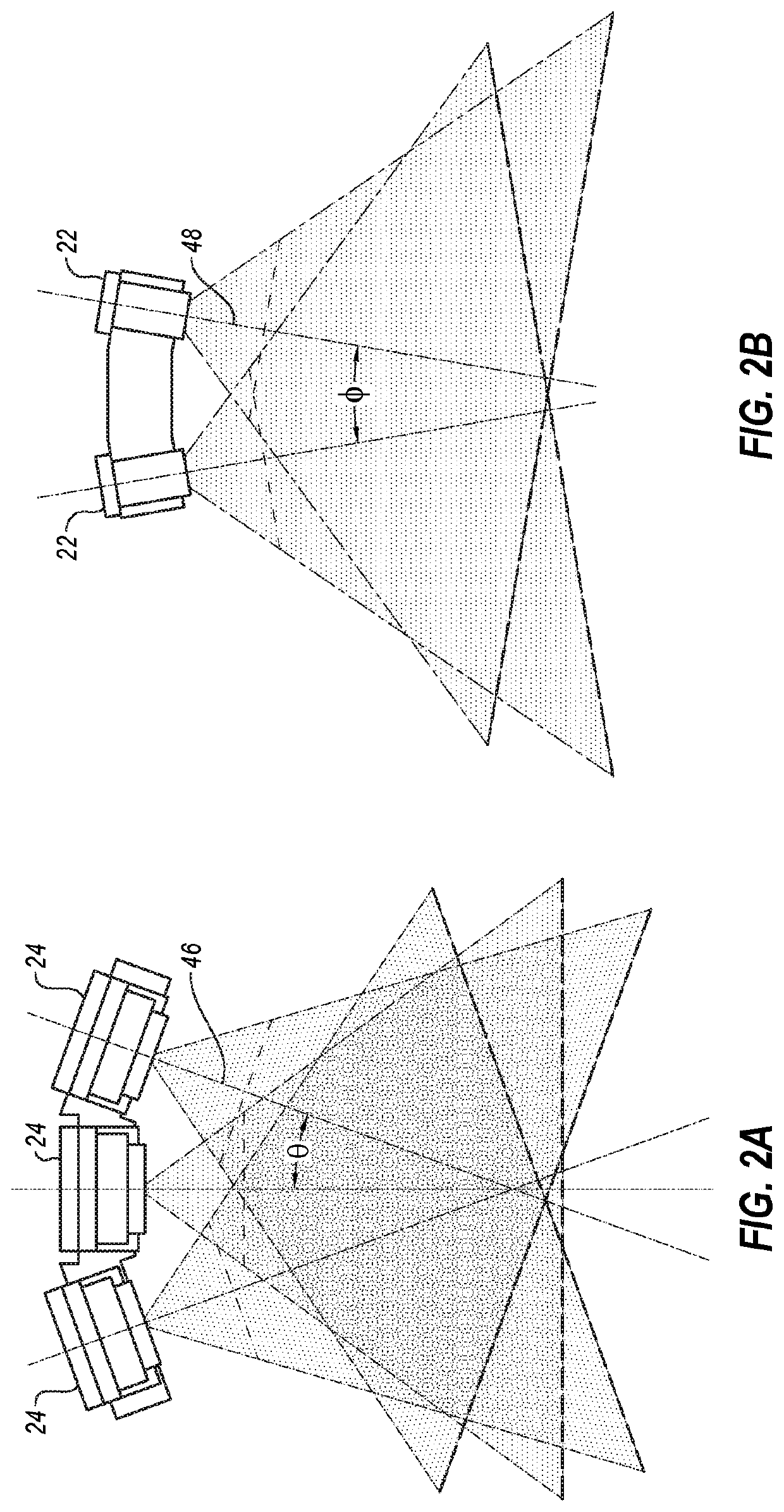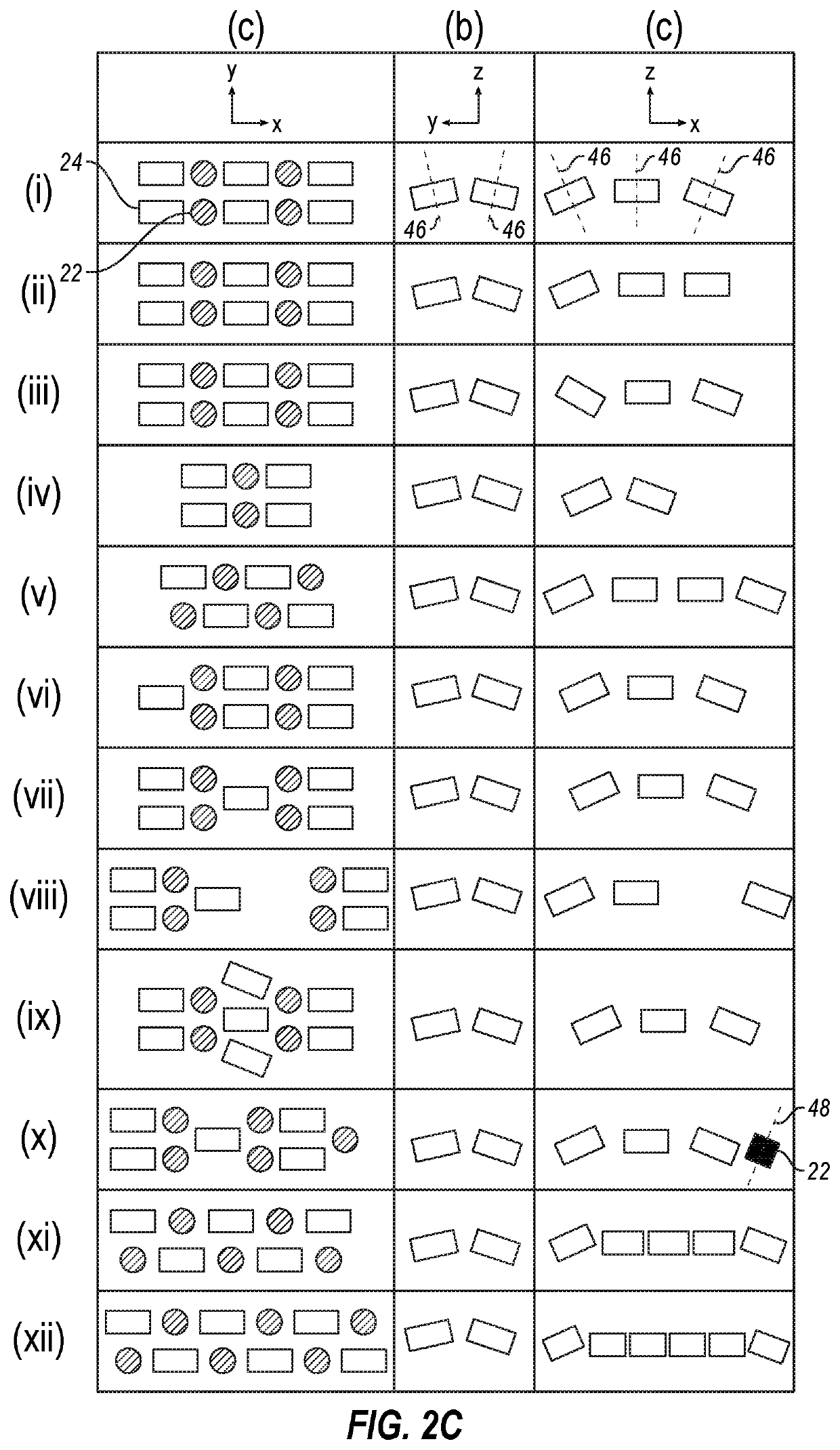Light field intraoral 3D scanner with structured light illumination
- Summary
- Abstract
- Description
- Claims
- Application Information
AI Technical Summary
Benefits of technology
Problems solved by technology
Method used
Image
Examples
Embodiment Construction
[0279]Reference is now made to FIG. 1, which is a schematic illustration of an elongate handheld wand 20 for intraoral scanning, in accordance with some applications of the present invention. A plurality of structured light projectors 22 and a plurality of cameras 24 are coupled to a rigid structure 26 disposed within a probe 28 at a distal end 30 of the handheld wand. In some applications, during an intraoral scan, probe 28 enters the oral cavity of a subject.
[0280]For some applications, structured light projectors 22 are positioned within probe 28 such that each structured light projector 22 faces an object 32 outside of handheld wand 20 that is placed in its field of illumination, as opposed to positioning the structured light projectors in a proximal end of the handheld wand and illuminating the object by reflection of light off a mirror and subsequently onto the object. Similarly, for some applications, cameras 24 are positioned within probe 28 such that each camera 24 faces an...
PUM
 Login to View More
Login to View More Abstract
Description
Claims
Application Information
 Login to View More
Login to View More - R&D
- Intellectual Property
- Life Sciences
- Materials
- Tech Scout
- Unparalleled Data Quality
- Higher Quality Content
- 60% Fewer Hallucinations
Browse by: Latest US Patents, China's latest patents, Technical Efficacy Thesaurus, Application Domain, Technology Topic, Popular Technical Reports.
© 2025 PatSnap. All rights reserved.Legal|Privacy policy|Modern Slavery Act Transparency Statement|Sitemap|About US| Contact US: help@patsnap.com



